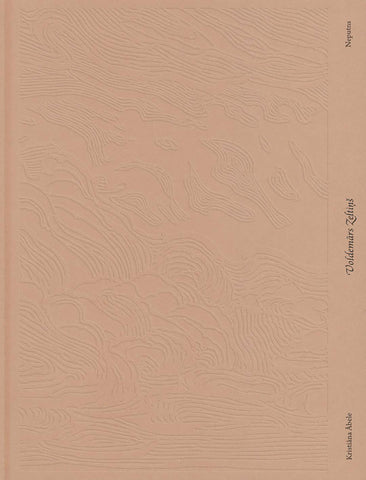
The monograph of art historian Kristiāna Ābele on the early and tragically deceased painter Voldemārs Zeltiņš (1879–1909) is a testament to the greatness of scrupulous research.

Voldemārs Zeltiņš has been called “a passionate gloomy poet of unsuitable colors, a Latvian van Gogh” (J. Siliņš), but according to Oļģerts Biete: “No, Zeltiņš cannot be called a painter of sadness - he is rather fast, impatient and cheerful - and that the “bromopotassium” of the details of life poisoned him so quickly.” Anyway - Zeltiņš is one of the artists who will always be perceived as a legend, as a brilliant talent, who has enough a few works to become an object of admiration and leave traces in history.

Although Voldemārs Zeltiņš has been recognized as the best talent of his generation and artists, there is no exhaustive biographical information about him, nor other documentary material that would fully testify to the artist's creative path. The number of surviving works is also small. The author's firm commitment to the statement that "there is almost nothing about him" is given by the author:
However, “almost” does not mean “at all”. To prove this, in several stages I have created a sufficient collection of materials for writing a book, researching works of art in museums, private collections and the antique market, as well as a large number of publications and unpublished sources found at the Latvian Academy of Arts Information Center, Latvian National Museum of Art Scientific Document Center, Department of Manuscripts and Rare Books of the Academic Library of the University of Latvia, Department of Rare Books and Manuscripts of the National Library of Latvia, Museum of Literature and Music and elsewhere.
Kristiāna Ābele

As a result of determined research, a full-fledged and voluminous monograph of the legendary artist Voldemārs Zeltiņš has been created, which includes a description of the era and creative efforts, as well as a little-seen but significant bohemian of the young writers and artists of the beginning of the 20th century, later insights into the course of Voldemārs Zeltiņš's own life, as well as an extensive analysis and evaluation of his artistic legacy. The book contains all the works of Voldemārs Zeltiņš identified so far. The void on the bookshelf, which has so far been dissonant with the findings of art historians about Voldemārs Zeltiņš, is now filled.